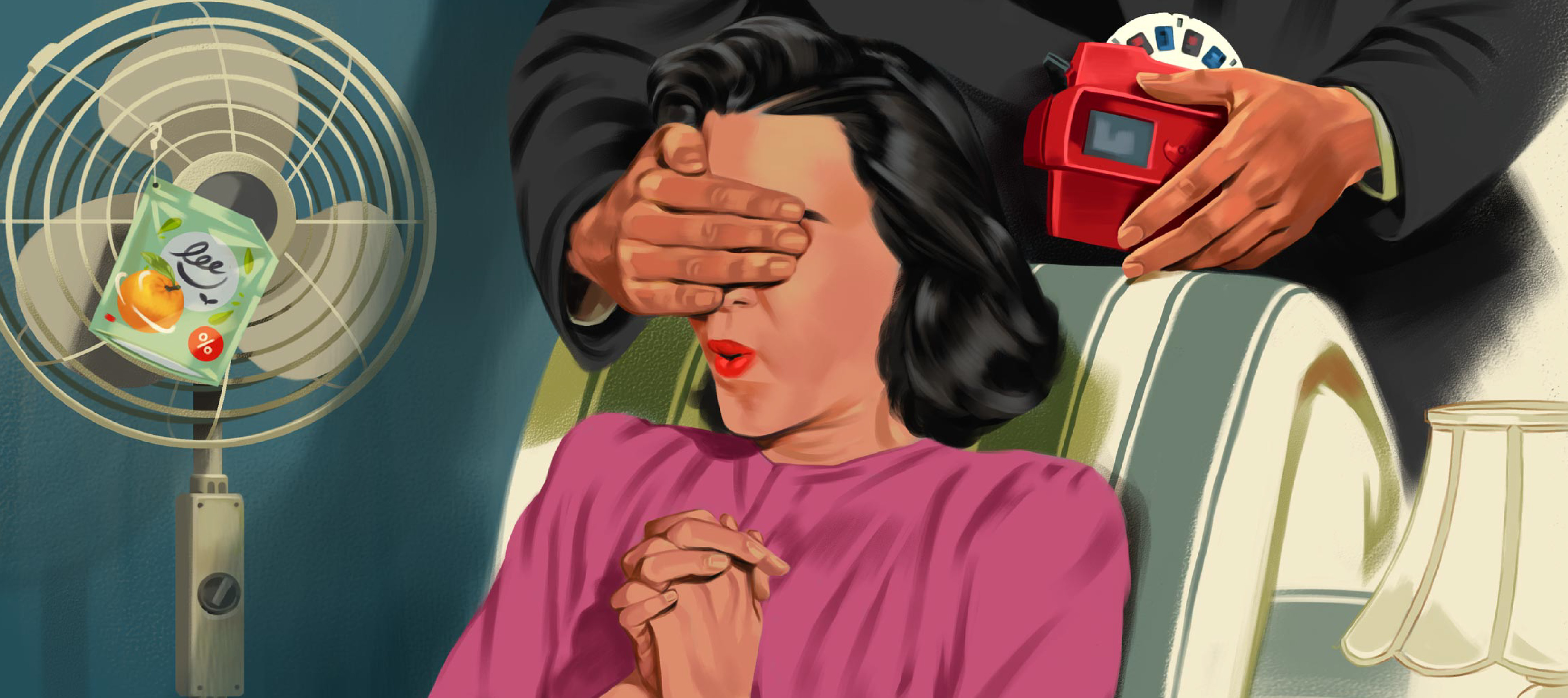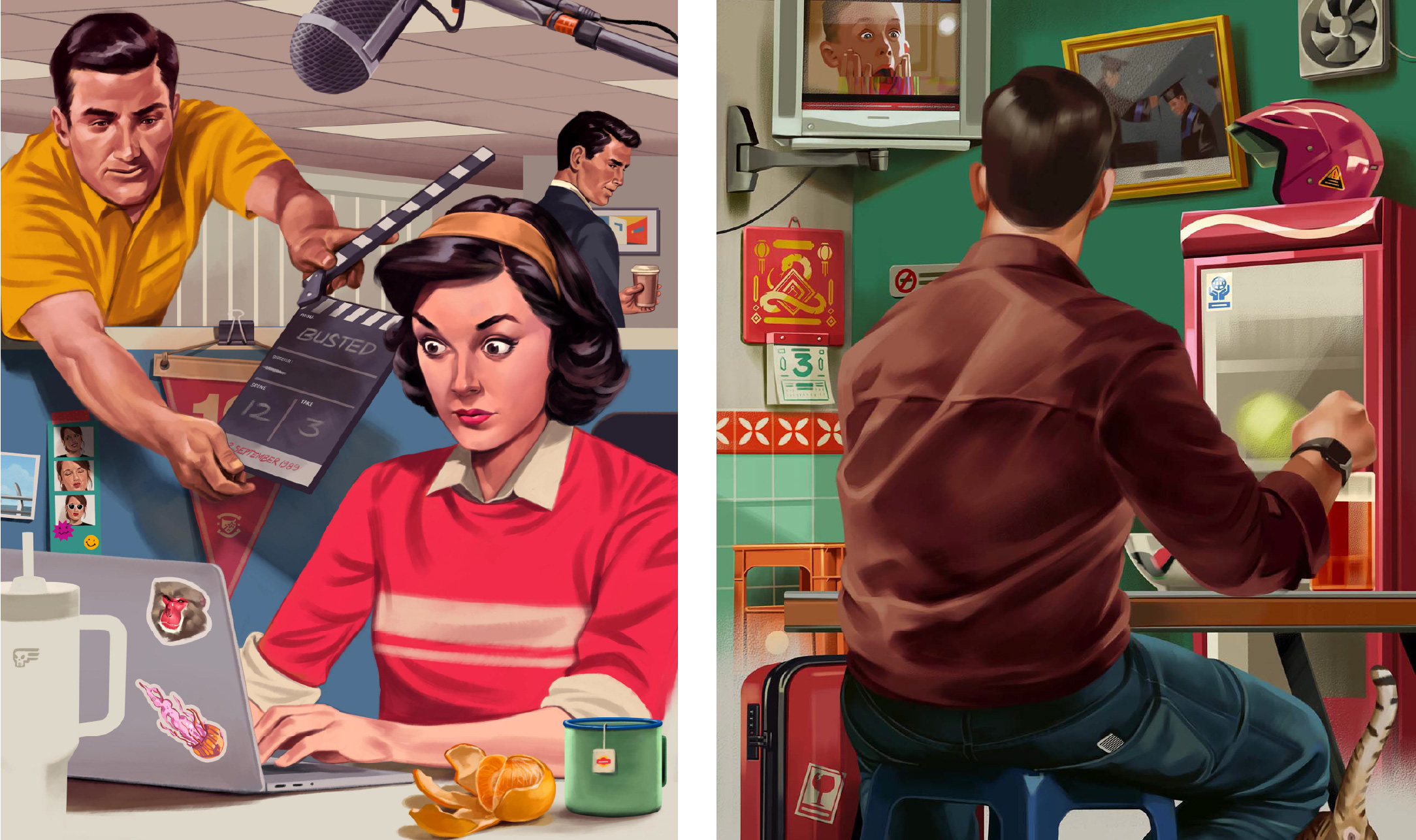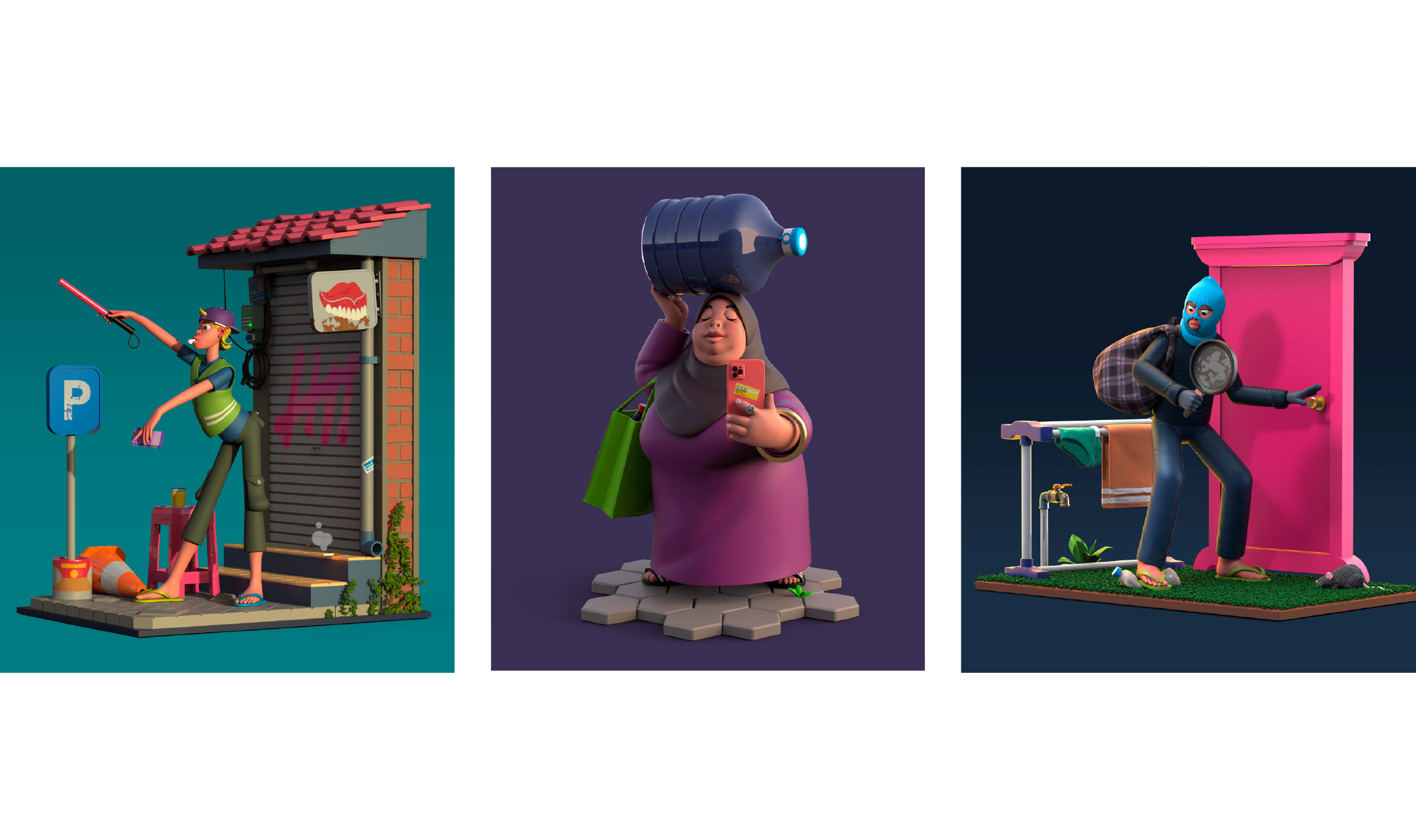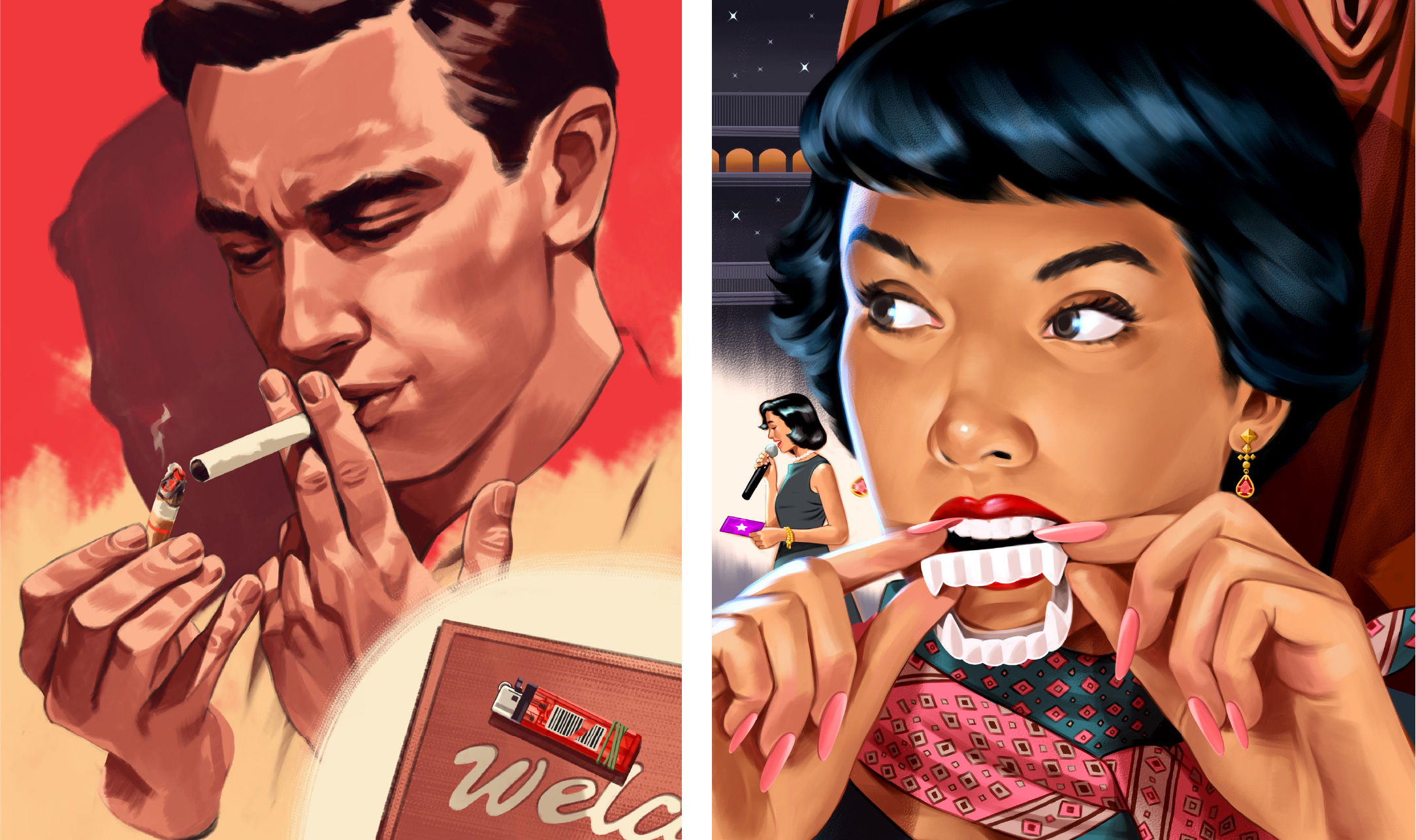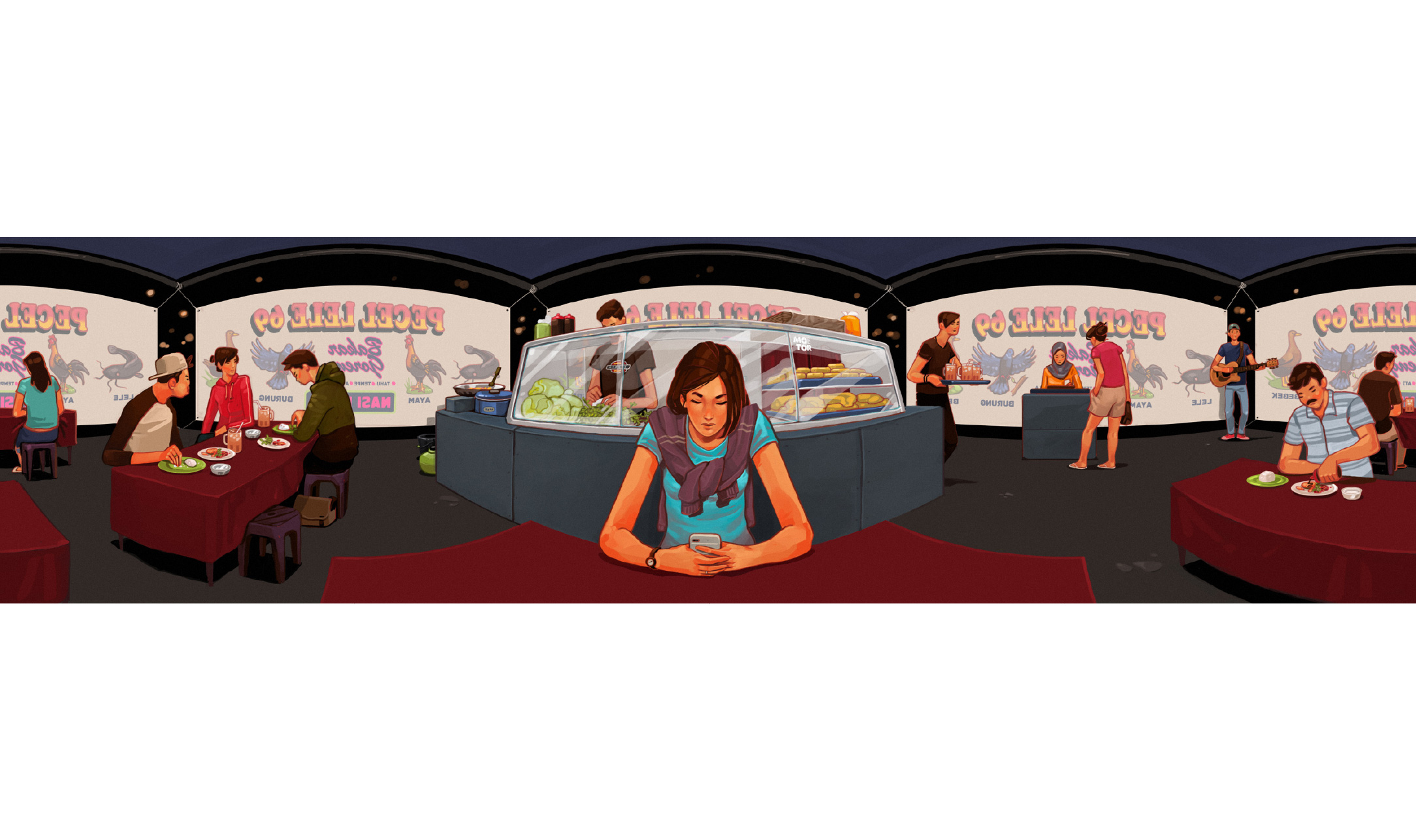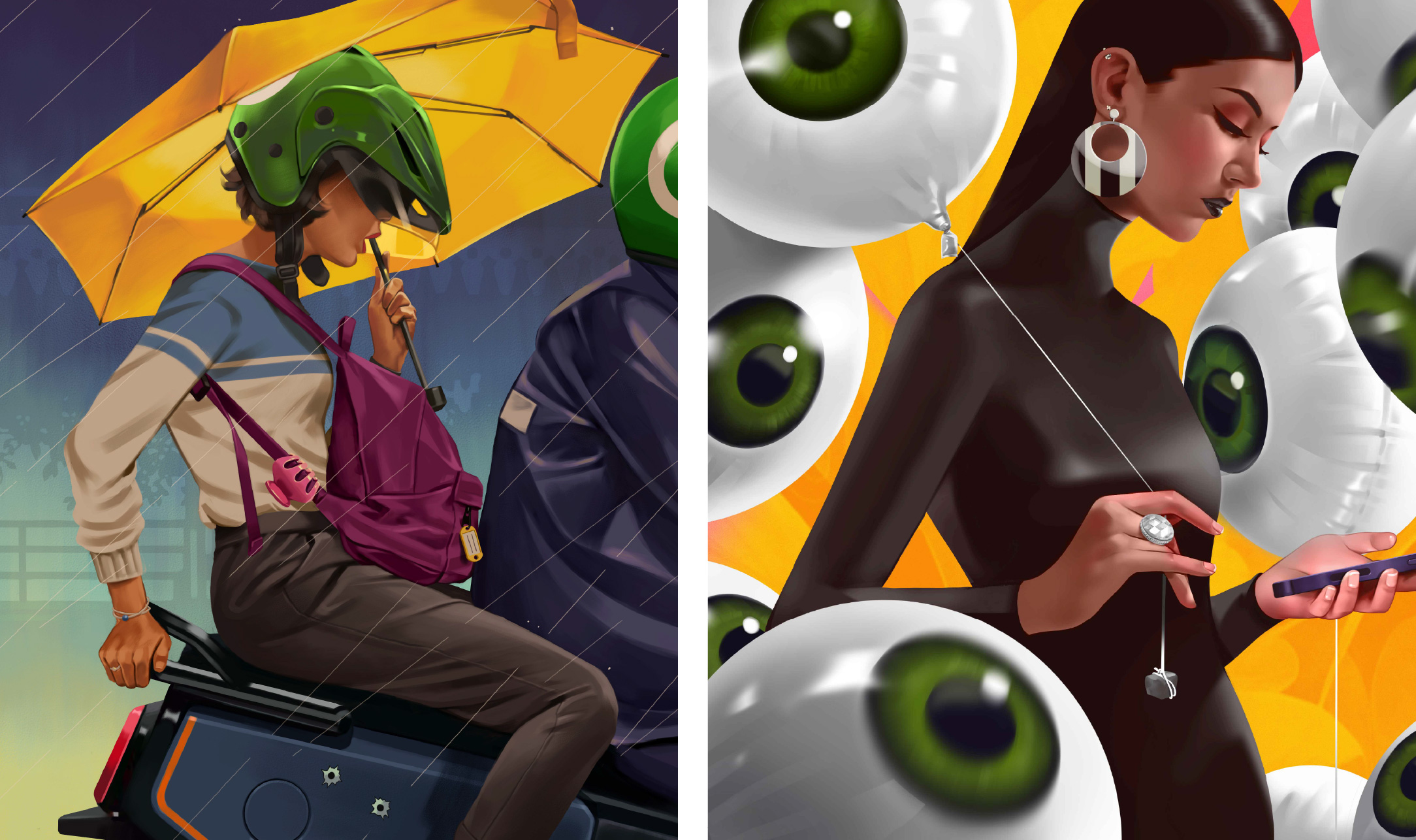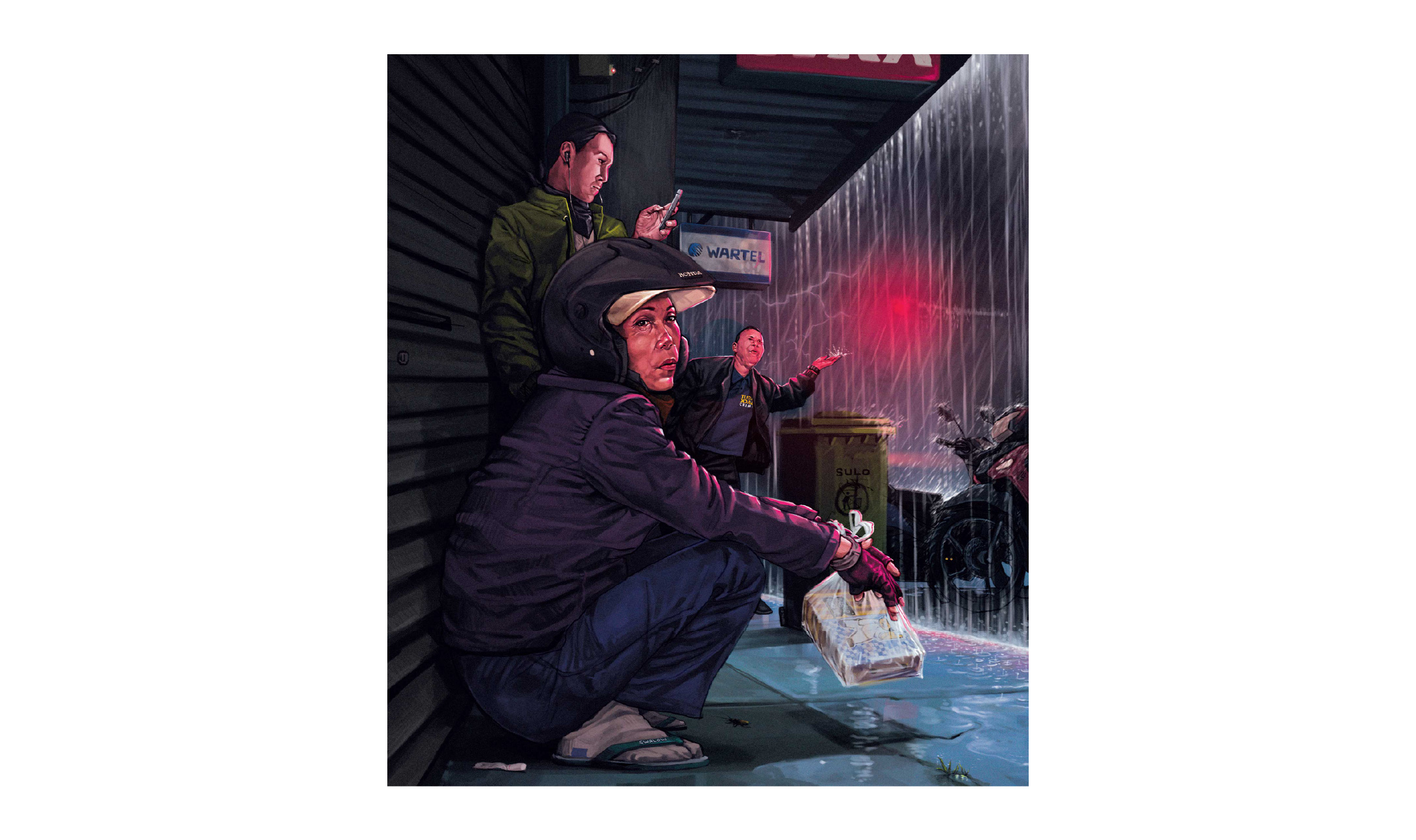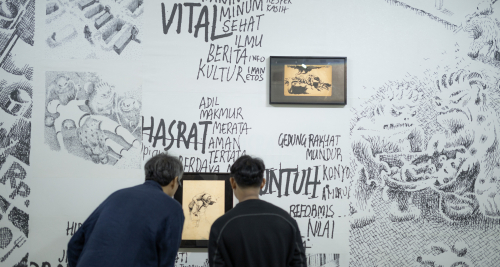Rizal Zulfadli: Pulp Fiction and Urban Stories
Rizal Zulfadli’s journey shows how illustration can begin from a simple habit, and evolve into a journey of exploration; its practice continuously shaped through encounters (with references, mediums, and contexts). From teenage sketches influenced by indie comics to discovering Andrew Loomis, and later pursuing a painterly contemporary style, Rizal has consistently built his artistic trajectory.
From childhood, Rizal showed interest in drawing and furthered it through his undergraduate study of Visual Communication Design. He stated that this marked the start of his illustration practice: “It started with portrait sketches, then I made characters influenced by Tank Girl or Gorillaz by Jamie Hewlett,”. At that time, he recalled that his interest leaned toward indie comics, where its protagonists were skinny and rebellious – reflected in their rough composition.
He started taking life drawing classes at campus and adopted a shift in his focus towards academic drawing: “From there my preference moved – it shifted from making illustrations in a punk style, to wanting to draw more properly in terms of fundamentals and proportion,” he said. He, then, encountered Figure Drawing for All It’s Worth by Andrew Loomis, to which he photocopied to study. Rizal claimed that the text served as an important reference point, and it continues to shape his inclination towards academic drawing, which remains a core pillar of his practice.
Rizal’s ‘official’ foray into drawing and illustration began in 2012. In working for editorial-based magazines, he followed an intense routine of producing two to three illustrations per week whilst expanding his skill set through the demands of digital painting. This multi-pronged rhythm of work continued into his current way of working that requires Rizal to balance brand collaborations with his personal projects.
The duality of practice has pushed him into a deeper discovery of his artistic style. Through digital painting, Rizal became exposed to works by American illustrators such as Mort Kunstler, Norman Rockwell, and Tom Lovell. “Their works hold a sense of realism in their character, but have qualities associated with painting. I was interested in making works that adapt the rendering of realist oil painting but are not photorealistic,” he explained.
The process required extensive trial-and-error, bringing Rizal to reckon with (his) dissatisfaction towards his earliest iterations of “style”. Throughout this process, his works appeared more fragmented through its incorporation of various styles, and Rizal continued his learning-by-doing: adapting to different digital brushes and experimenting with blending, lighting, and color palettes. As he grew to be more comfortable with these techniques, he began to build a signature ‘style’ through an approach rooted in contemporary life. His illustrators carried an American kitsch quality and a strong reference to the pulp fiction aesthetic – that would later define the core of his visual identity.
Today, Rizal works primarily on narrative illustrations inspired by slice-of-life stories. He draws his focus on the character details, with a signature lesser-detailed backdrop to ensure that the viewer’s gaze is rooted in the everyday quality of the scene. “The narratives I bring up are usually about human interest, with dramatized characters and relatable objects,” he said.
At the same time, he remains drawn to comic and cartoon-style illustration. Switching between multiple focuses grants Rizal a form of balance and expands his storytelling abilities: “It’s like a refreshment. I channel it into 3D illustrations as a contrast to my usual style. The stories are still the same, but the narrative is a little more grassroots.”
Looking at his works, one can notice the satirical undertones that reflect on urban life. Rizal describes this as a response to his own daily encounters. “Sometimes it comes from habits, jokes, even the absurdities of urban life today. Through illustration, I want to show the ironic side that sometimes feels satirical. Not to judge, but so we can re-examine habits in a lighter and artistic way,” he reflects.
This choice makes his works closely rooted in the paradoxes of urban lifestyle, as he continues to observe the context of a daily routine, and he filters out their absurdities, and presents them in a visually appealing manner that ensures accessibility without losing its character or depth.
Rizal also mentioned that his most challenging works often came from personal experiments. One example is a 360-degree panoramic illustration he created in 2018 that depicts a street-side pecel food stall. “The goal was to show a direct point-of-view experience of the stall, which incorporates the crowd. Technically it was quite layered, from composing images on a spherical grid to syncing files so they could be viewed in 360 across several platforms,” he explained.
For him, personal projects are often more demanding than brand collaborations, as he admitted that his own expectations are harder to manage. The work requires the fulfillment of his own personal ambition, demanding a push out of his own comfort zone; ultimately, testing Rizal’s skills in technicalities and narratives.
As an artist, Rizal’s works have appeared in several illustration fairs which include Bangkok Illustration Fair 2022, Singapore Illustration Arts Fest 2024, and Kuala Lumpur Illustration Fair 2025. This year he is featured as an official artist at the Jakarta Illustration and Creative Arts Festival (JICAF) 2025. In anticipation of the event, he is preparing several new works and exclusive items to be sold. One highlight is an artbook compiling his personal works over the course of eleven years. “The book is a documentation of works from my early stylistic explorations to mid-2025, including both published and unpublished pieces, all compiled into one,” he explained.
The artbook was initially created for a private archive, and its exclusivity will be maintained through its release of only ten copies – available at JICAF 2025. Rizal hopes this format offers an alternative way to experience illustration more personally. In tandem, he is preparing new work to be showcased at one of the festival’s main programs.
Rizal also shared his perspective on the development of illustration in Indonesia. He sees a positive shift in recent years: “It’s interesting that illustration itself can now become the main medium. Awareness of illustration, both from the public and the creative industry, is getting stronger. There are many opportunities for illustrators, in both commercial and exhibition spaces, which makes the ecosystem more positive.”.
His works today stand at the intersection of personal narrative, social satire, and visual exploration. From editorial illustrations to commercial projects and technical experiments, Rizal demonstrates how illustration can serve as both a documentation and reflection of (our) daily life.
At JICAF 2025, Rizal returns to that long journey through the artbook he has prepared. It becomes a documentation and a personal archive that indicates the life-long processes of illustration; its language shifting according to Rizal’s own learnings, experiments, and response in present time.
